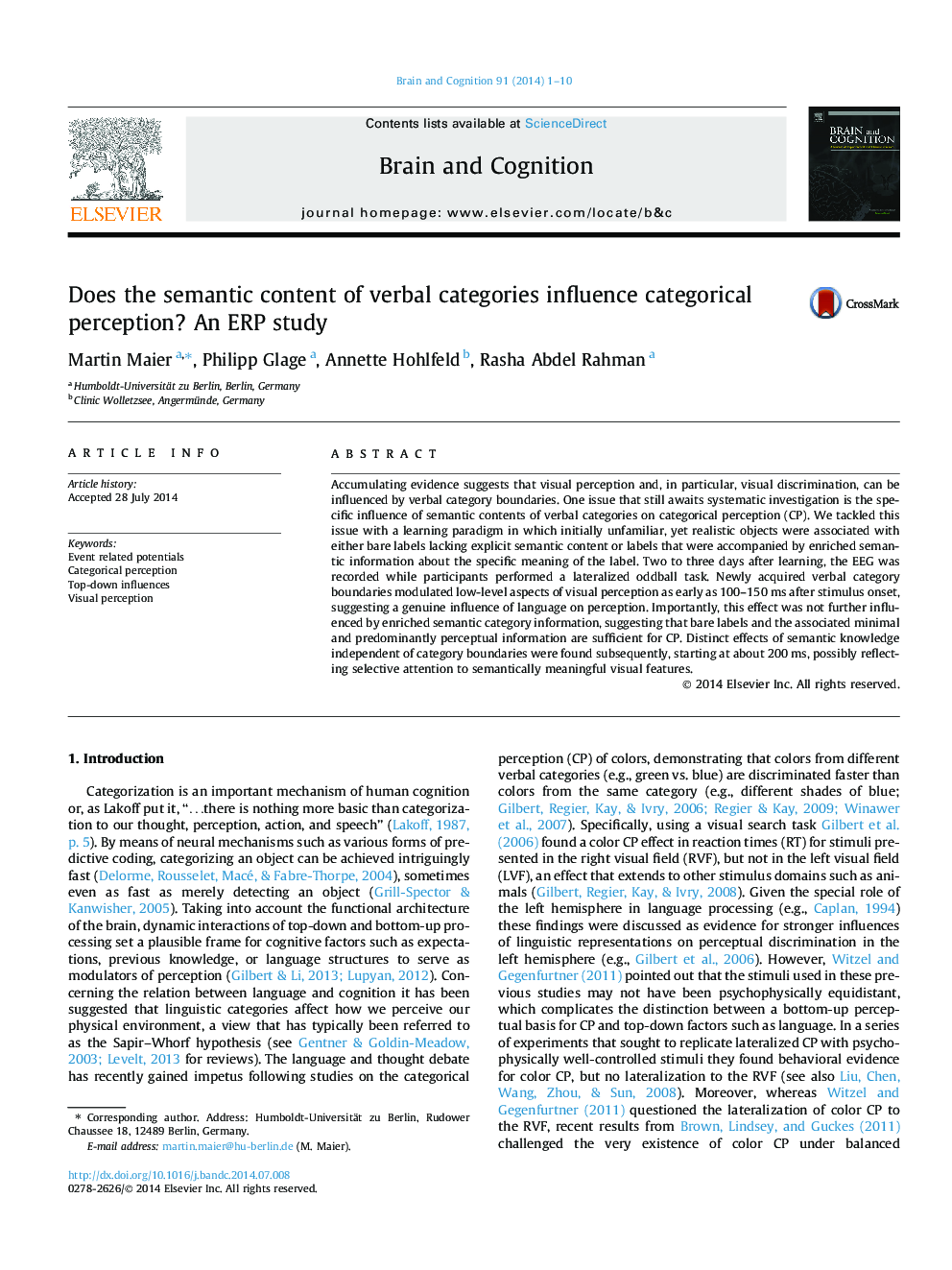| Article ID | Journal | Published Year | Pages | File Type |
|---|---|---|---|---|
| 7283131 | Brain and Cognition | 2014 | 10 Pages |
Abstract
Accumulating evidence suggests that visual perception and, in particular, visual discrimination, can be influenced by verbal category boundaries. One issue that still awaits systematic investigation is the specific influence of semantic contents of verbal categories on categorical perception (CP). We tackled this issue with a learning paradigm in which initially unfamiliar, yet realistic objects were associated with either bare labels lacking explicit semantic content or labels that were accompanied by enriched semantic information about the specific meaning of the label. Two to three days after learning, the EEG was recorded while participants performed a lateralized oddball task. Newly acquired verbal category boundaries modulated low-level aspects of visual perception as early as 100-150Â ms after stimulus onset, suggesting a genuine influence of language on perception. Importantly, this effect was not further influenced by enriched semantic category information, suggesting that bare labels and the associated minimal and predominantly perceptual information are sufficient for CP. Distinct effects of semantic knowledge independent of category boundaries were found subsequently, starting at about 200Â ms, possibly reflecting selective attention to semantically meaningful visual features.
Related Topics
Life Sciences
Neuroscience
Cognitive Neuroscience
Authors
Martin Maier, Philipp Glage, Annette Hohlfeld, Rasha Abdel Rahman,
